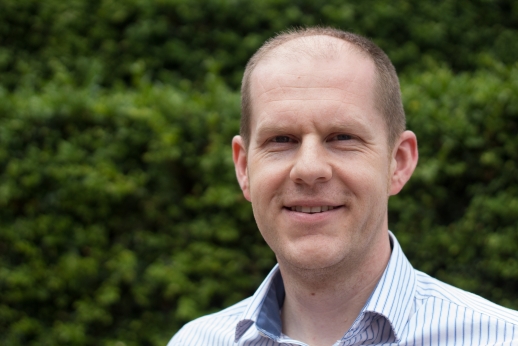This month we talked to Peter May from the British Library to find out what he has been working on and how he got into digital preservation.
Tell us a bit about yourself and your role

As the digital preservation technical architect at the British Library I research, develop and advise colleagues on technical practices and solutions to improve the Library’s digital preservation capabilities. This is quite a varied role, from undertaking detailed file format research, developing analytical scripts to assess collections of our content, defining workflow or system requirements, enhancing preservation software tools and promoting their use, to managing day-to-day technical work on projects such as our current Integrated Preservation Suite, and sharing digital preservation knowledge with Library and external colleagues. That’s miles too much to do by myself, so I have help from my team of 4 technical analysts.
How did you get here? What was your path into digital preservation?
From a software engineering perspective. I joined the Digital Preservation Team at the British Library as a software developer on the EU SCAPE Project in October 2011. This was my first introduction to digital preservation as a discipline. Staff changes within the Library opened the opportunity for what is now my current role; this was initially combined with the SCAPE Technical Coordinator role. Since SCAPE finished I have continued in my architect role, taking on additional responsibility as OPF vice-chair board member.
Prior to the Library, I worked as a software engineer for Philips Electronics (UK) in their Applied Technologies division. Broadly speaking we worked on early product development, so I was often designing and developing prototypes and proof-of-concept demonstrators, or contributing to standards. Over my ~6 years there I worked on a range of different technologies including IPTV metadata (notably the Open IPTV Forum metadata standards), GPS, Bluetooth/Bluetooth Low Energy, Android application development, and healthcare devices.
What are you working on at the moment?
One of my main tasks at the moment is architecting and overseeing technical efforts on our Integrated Preservation Suite project. We’re developing a suite of tools to enhance the Library’s preservation planning capability, largely focussed on automation and addressing the Library’s heterogeneous collections. To achieve this, we’re integrating several components – a knowledge base, a software repository, a policy and planning repository, and a web-based workbench user interface that ties all the components together. We’re just about to start our next phase which will be looking towards producing a robust release of the suite’s components.
What do you see as the main benefit of OPF membership?
Being part of an international community of technically-minded people and the benefits that affords in terms of being able to discuss, enhance and influence the digital preservation solutions which the Library relies upon. JHOVE, in particular, is used within Library workflows and being able to influence the development direction of this tool via the Product Board allows us to suggest timely enhancements that benefit our needs (and hopefully others’ needs too).
Who are you / what do you like to do in your free time?
I’m usually either outdoors walking my dogs, spending time with my family, or doing DIY and decorating around the house. I’ve always enjoyed making things, and this has evolved into little projects around the house; I’ve designed and constructed an in-built bookshelf complete with smart-LED lighting (Philips Hue, naturally) so that I can show off my home library in 16 million colours! It pales in comparison to the King’s Library, though.

